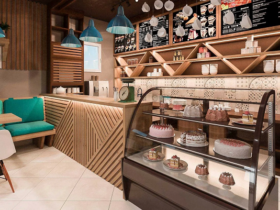Iceland is a large island near the polar circle, characterized by a wild and colorful landscape rich in geysers, waterfalls and green valleys. Its coastline is cut by numerous bays and fjords. If there is a desire to enjoy the virgin nature, the country of Iceland is an ideal place.
The sights of Iceland
The island of Iceland shows greater volcanic activity – Gekla alone erupted 16 times, receiving the nickname “Gate to Hell”. Civilization reigns in the coastal areas, especially in the capital of Reykjavik, where more than half of the country’s population lives. It is located in a wide bay, surrounded by mountains and hot springs, which create natural, environmental heating, representing a busy center that combines the old -fashioned and modern architecture and offers a lively nightly life.
Tourists can be sure that the country of Iceland will provide many more attractions. The People’s Museum in the village of Skogar is interesting, and in Latrabjarg the northern poultry cliff is located in Latrabjarg. Probably the most popular tourist destination is Lake Mivatn (Myvatn), where you can see lava fields, picturesque sections of grass and water, endless flocks of birds.
National cuisine of Iceland
The main ingredients of Icelandic cuisine, which is mainly subject to Scandinavian and European influences, are lamb and fish. Fish is 70 percent of the country’s exports. Located in the northern latitudes, the country of Iceland does not suffer from vegetable deficiency, since its inhabitants grow them in naturally heated greenhouses using pairs of geysers. The most popular dishes of Icelandic cuisine are: Hangikjot – smoked lamb, Hardfiskur – dried fish, Sild – herring pickled in various sauces. The strangest delicacy is the rotten meat of the shark, which is preferred by local residents, but the guests of the island are not very fond of. The national drink is Brennivin – moonshine made of potatoes.
Weather in Iceland
If not for the North-Atlantic current, the country of Iceland would freeze most of the year. Constant winds, frequent drizzle and slight rains are constant companions of local life. In winter, it is often snowing, but, oddly enough, the temperature rarely drops below 5 degrees of frost. Summer, when the thermometer does not rise above 15 degrees in the northern latitudes and higher plus 22 in Reykjavik, you can’t call it especially hot, but this is the time the most suitable for tourist trips here.


